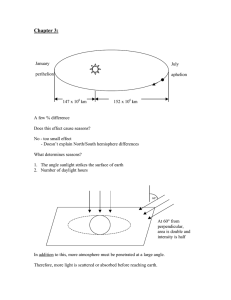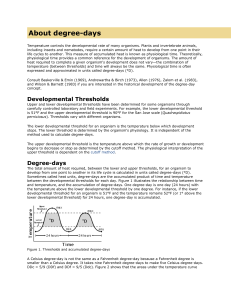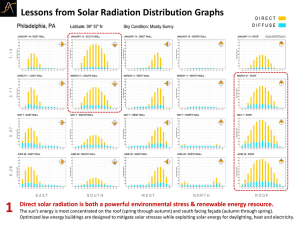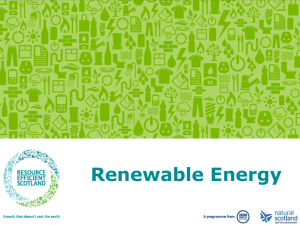EMS2014-444 - CO Meeting Organizer
advertisement
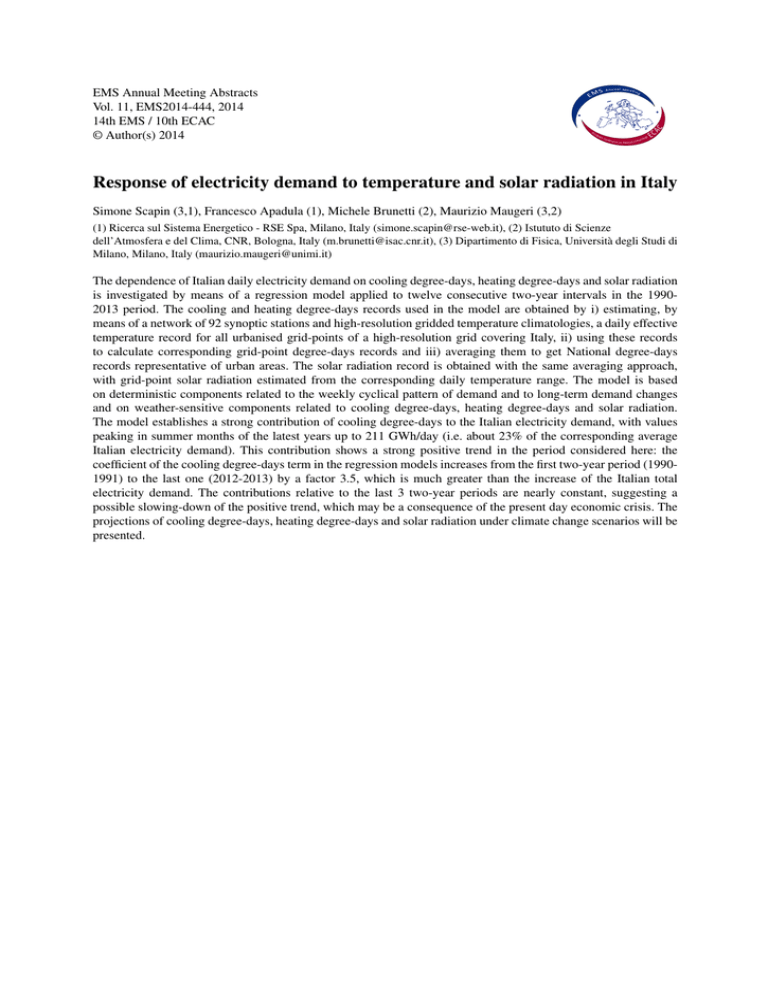
EM Eu ro p S A n n u a l M e e ti n g AC EMS Annual Meeting Abstracts Vol. 11, EMS2014-444, 2014 14th EMS / 10th ECAC © Author(s) 2014 ean Con fe re n ce on Applied Clim atol ogy EC Response of electricity demand to temperature and solar radiation in Italy Simone Scapin (3,1), Francesco Apadula (1), Michele Brunetti (2), Maurizio Maugeri (3,2) (1) Ricerca sul Sistema Energetico - RSE Spa, Milano, Italy (simone.scapin@rse-web.it), (2) Istututo di Scienze dell’Atmosfera e del Clima, CNR, Bologna, Italy (m.brunetti@isac.cnr.it), (3) Dipartimento di Fisica, Università degli Studi di Milano, Milano, Italy (maurizio.maugeri@unimi.it) The dependence of Italian daily electricity demand on cooling degree-days, heating degree-days and solar radiation is investigated by means of a regression model applied to twelve consecutive two-year intervals in the 19902013 period. The cooling and heating degree-days records used in the model are obtained by i) estimating, by means of a network of 92 synoptic stations and high-resolution gridded temperature climatologies, a daily effective temperature record for all urbanised grid-points of a high-resolution grid covering Italy, ii) using these records to calculate corresponding grid-point degree-days records and iii) averaging them to get National degree-days records representative of urban areas. The solar radiation record is obtained with the same averaging approach, with grid-point solar radiation estimated from the corresponding daily temperature range. The model is based on deterministic components related to the weekly cyclical pattern of demand and to long-term demand changes and on weather-sensitive components related to cooling degree-days, heating degree-days and solar radiation. The model establishes a strong contribution of cooling degree-days to the Italian electricity demand, with values peaking in summer months of the latest years up to 211 GWh/day (i.e. about 23% of the corresponding average Italian electricity demand). This contribution shows a strong positive trend in the period considered here: the coefficient of the cooling degree-days term in the regression models increases from the first two-year period (19901991) to the last one (2012-2013) by a factor 3.5, which is much greater than the increase of the Italian total electricity demand. The contributions relative to the last 3 two-year periods are nearly constant, suggesting a possible slowing-down of the positive trend, which may be a consequence of the present day economic crisis. The projections of cooling degree-days, heating degree-days and solar radiation under climate change scenarios will be presented.
